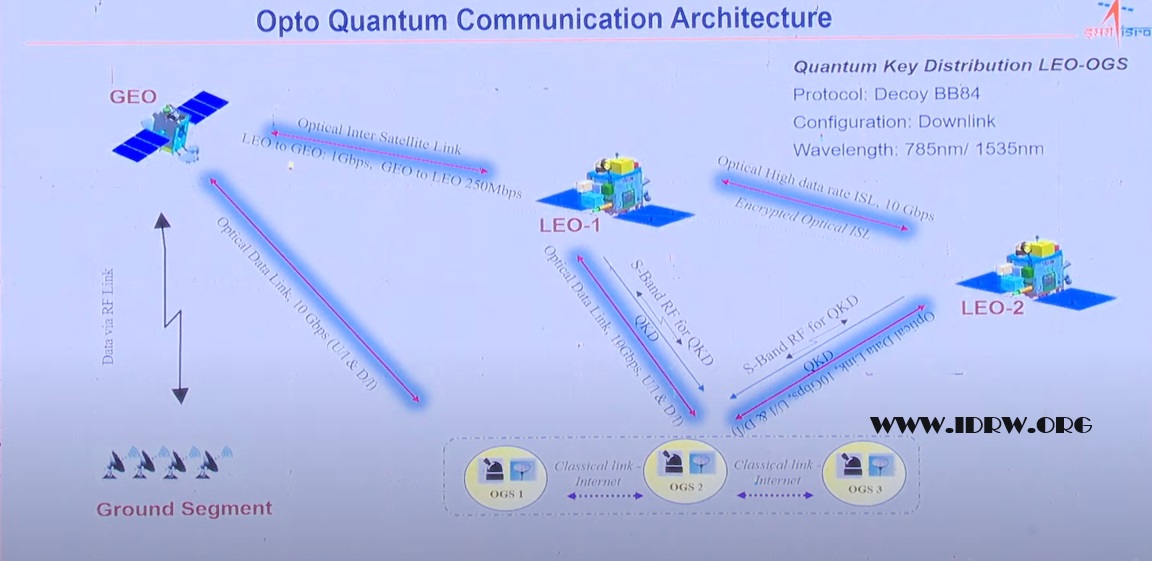SOURCE: IDRW.ORG TEAM

In a groundbreaking announcement at IIT Bombay’s Techfest, ISRO Chairman Dr. S. Somanath unveiled India’s ambitious journey into the realm of quantum communication. He revealed ISRO’s work on Opto Quantum Communication Architecture, specifically focusing on the development of Quantum Key Distribution (QKD) using a protocol known as Decoy BB84. This marks a significant step towards building secure and unbreakable communication networks for satellites and beyond.
QKD leverages the principles of quantum mechanics to establish unhackable communication channels. Unlike traditional encryption methods that rely on complex mathematical algorithms, QKD uses the inherent randomness of quantum particles – photons in this case – to generate a secret key shared only between the sender and receiver. Any attempt to intercept the key would inevitably disturb the quantum state of the photons, alerting the parties involved to a potential eavesdropping attempt.
ISRO’s Opto Quantum Communication Architecture:
- Protocol: Decoy BB84 is a widely used QKD protocol that employs decoy states – weak coherent pulses of light – alongside the actual signal photons. This adds an extra layer of security by making it difficult for an attacker to distinguish between the real key and the decoys.
- Configuration: Downlink refers to the direction of data transmission, from the satellite to the ground station. This configuration is crucial for establishing secure communication between orbiting satellites and control centers on Earth.
- Wavelength: 785nm and 1535nm are specific wavelengths of light chosen for their suitability in optical fiber transmission. These wavelengths offer optimal transmission efficiency and minimize interference with other signals.
The Implications for Secure Satellite Networks:
ISRO’s exploration of QKD technology holds immense potential for revolutionizing satellite communication. Secure satellite networks are critical for a range of applications, including:
- Military and defense: Secure communication between military personnel and assets, preventing sensitive information from falling into enemy hands.
- Financial transactions: Ensuring the secure transmission of financial data and safeguarding against cyberattacks.
- Critical infrastructure: Protecting communication channels for power grids, air traffic control, and other vital infrastructure.
Despite these challenges, ISRO’s foray into Opto Quantum Communication Architecture demonstrates India’s commitment to exploring cutting-edge technologies and securing its future in the space communication domain. As research progresses and technology matures, we can expect to see the integration of QKD into future satellite networks, paving the way for a new era of secure and unbreakable communication across vast distances.
NOTE : Article cannot be reproduced without written permission of idrw.org in any form even for YouTube Videos to avoid Copy right strikes. Websites doing illegal reproductions will get DCMA and Legal Notices.